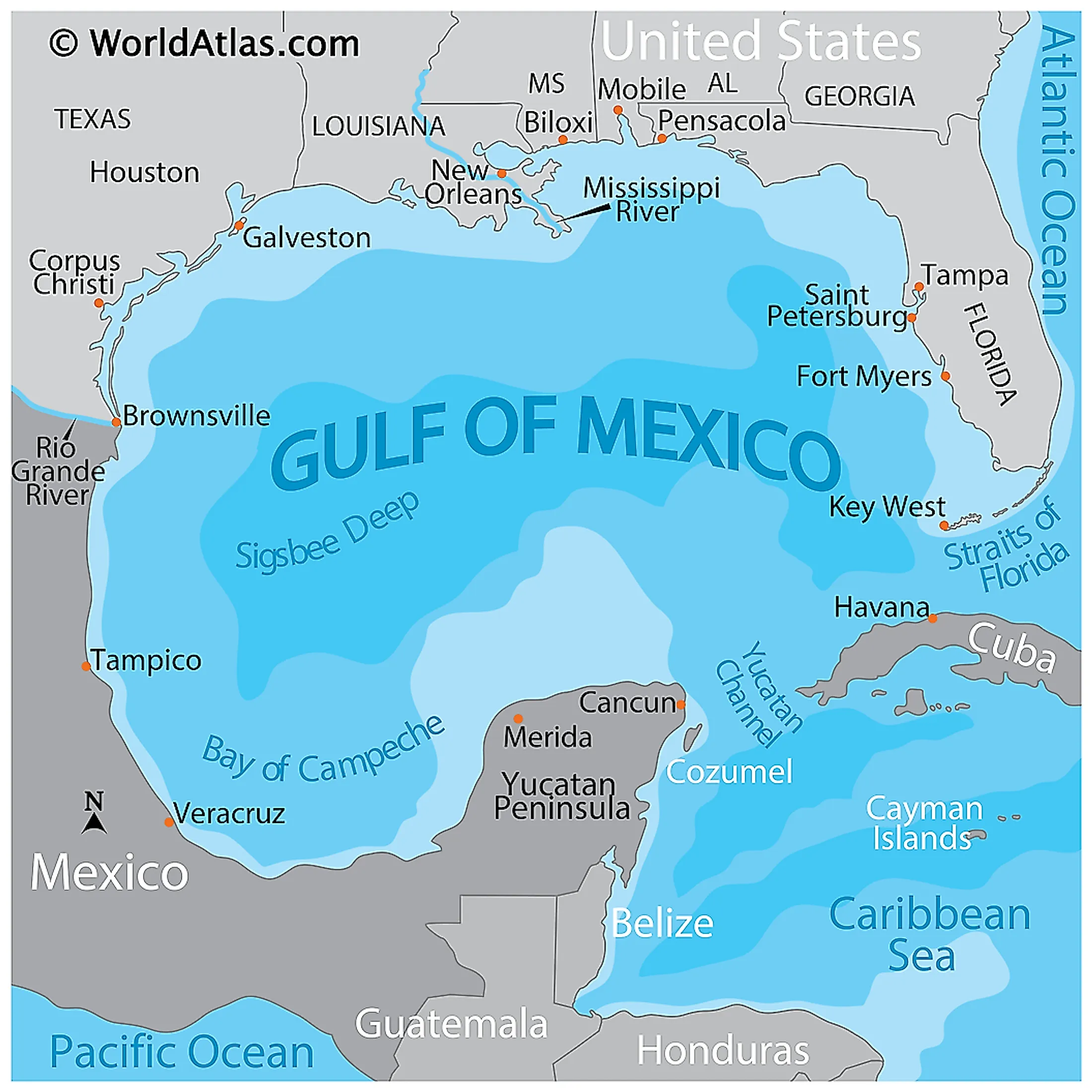
Sigsbee Deep
The Sigsbee Deep is located in the Gulf of Mexico Basin and is the deepest part of the basin, with a depth averaging between 3,750 and 4,384 meters. The Deep sits in the Gulf of Mexico's southwest portion, about 320 kilometers from Brownsville, Texas, between the coast and the Yucatan Peninsula. Sigsbee is named for Commander Charles Dwight Sigsbee, a U.S. coast and geodetic surveyor who first discovered this part of the basin during a mapping expedition.
The deep itself lies on top of a range of salt beds. These salt deposits and mounds were created hundreds of millions of years ago from the intermittent filling and evaporating of the basin with seawater at the early stages of its life. As the saltwater from the basin evaporated, it left behind large amounts of salt, which continued to build up over millennia.

Underwater Landscape Of The Sigsbee Deep
Steep cliffs border the Sigsbee deep on three sides. To the northwest is the Sigsbee Escarpment. This escarpment was formed due to salt tectonics which layered ancient salt deposits on Cenozoic sedimentary rock. The escarpment has a height (or depth) of roughly 1220 meters. The escarpment also runs for 560 kilometers and splits the lower continental slope of the northern gulf from the Sigsbee Abyssal plain. It has approximately 900 meters of relief.
In the center of the basin is the Sigsbee Abyssal Plain, an extremely flat area aside from the Sigsbee Knolls, which are salt dome hills that dot the seafloor.
Currents And Water Flow In The Sigsbee Deep
The Gulf of Mexico is the origin place for the Gulf Stream, one of Earth's most important ocean currents. Research has shown that there are also significant currents which can be seen and felt even within the basin and the Sigsbee Deep. Saline rivers and pools are common on the seafloor here due to the high levels of salt deposits, which rise up through the seafloor and then dissolve once they meet the open water, but there is also notably a persistent current in the depth of the gulf. This current has become known as the Sigsbee Abyssal Gyr and moves at a speed of roughly 0.16 kilometers per hour.
The Unknown
The sheer depths of the basin, specifically the Sigsbee Deep, mean there is much unknown within these deep dark waters. Though remote exploration expeditions have been conducted, the size and depth of the basin mean that there are large areas yet to be seen and discovered. However, as technologies advance, there is the potential for new and exciting discoveries here and elsewhere below our ocean's surface.











